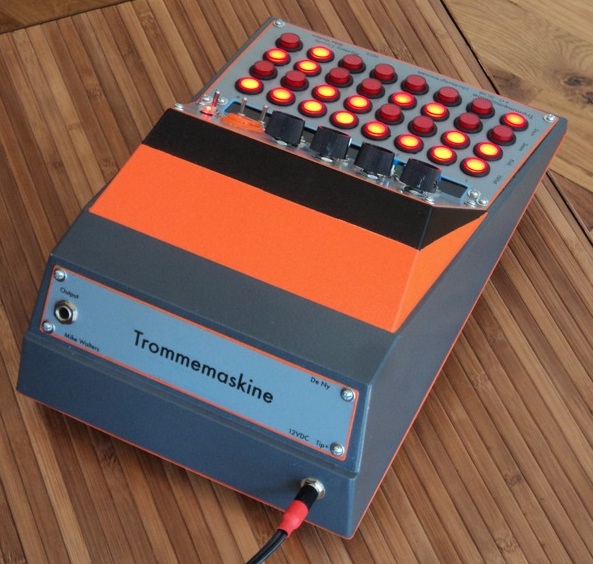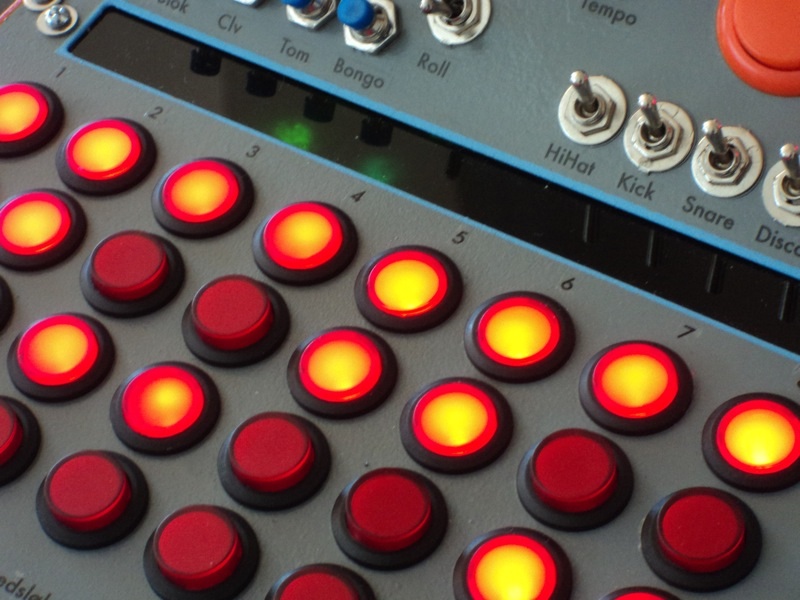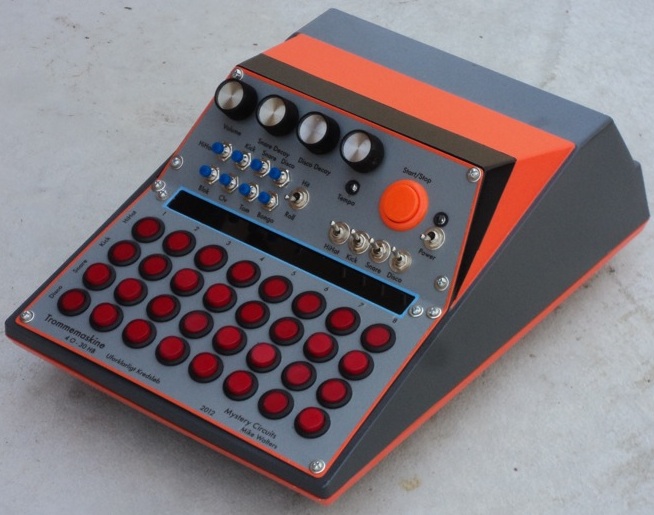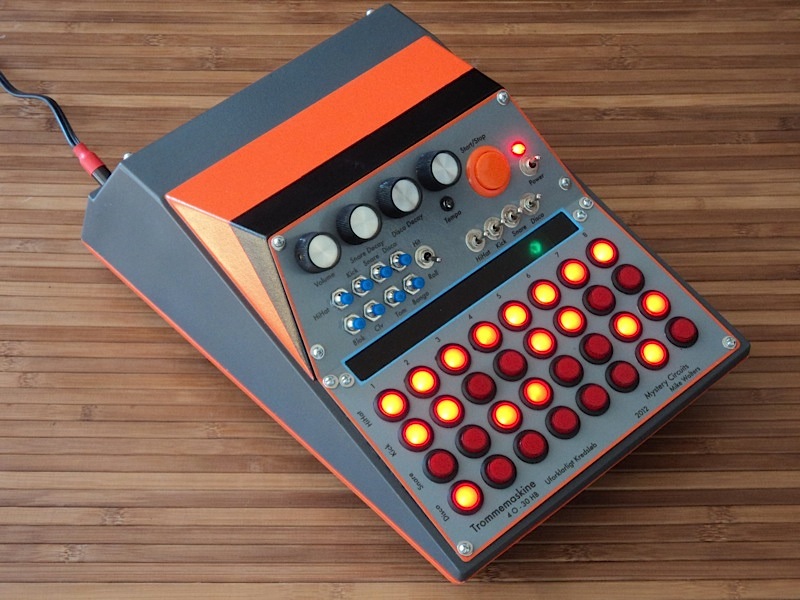Trommemaskine
Built by Mike Walters
Chapel Hill, NC 2012
This is the Trommemaskine,
commissioned for Olivia Hjermitslev. "Trommemaskine" means "Drum
Machine" in Danish. Rhythms are mapped out on the 8x4 matrix panel,
which includes a Hi-hat, Kick, Snare, and a Disco drum.
Those four sounds, as well as four additional percussion sounds, can also be triggered by the blue momentary switches. A toggle switch sets whether the drum triggers once, or at the rate of the sequencer.
The large orange button starts and stops the rhythm.
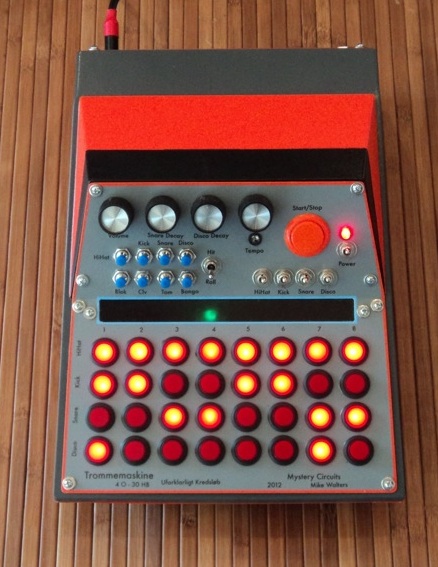
The drum sounds come from a modified Paia Drum Tone circuit that I built ten years before the Trommemaskine. I never used the circuit, and it sat in a box for all those years. The sounds are all analog, using ringing oscillators and a white noise generator. The Paia board didn't have a hi-hat sound, so I made a made one by simply passing white noise through an opto-coupler, and gating it the way I did with the other sounds.
The case comes from an old pH Meter given to me by my friend Tim Ristau. I used my CNC to mill the panel out of 22 gauge steel. The green LEDs on the sequencer are diffused through clear adhesive rubber feet.
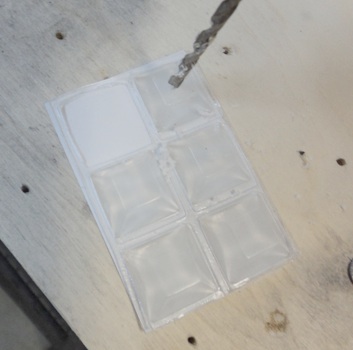
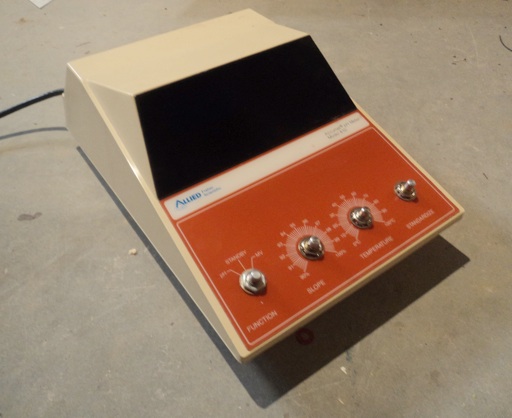
How it works
The sounds from the Paia are triggered by +5v pulses. A 555 timer with variable frequency clocks a 4017 decade counter configured for eight steps. There is a bank of 4081 AND gates wired to the 32 buttons on the matrix panel. The outputs of the 4017 are wired in parallel with rows of four switches (hihat, kick, disco, snare) onto their own AND gate. As the sequencer runs, and if the one of the latching switches from the matrix panel is on, it will trigger that drum sound. The sequence runs eight steps, and repeats.
The sequencer is started when the orange button sends a pulse to a 4027 flip-flop. This changes states, and sends a logic high to another bank of AND gates - one bank for the sequencer LED's, and another to a bank of buffering gates that trigger the sounds. Pressing the orange button again changes the state of the flip-flop, turning off the logic high to the enabling gates.
Even when the sequence is off, all the sounds can be manually triggered with the blue buttons. A two way switch is wired to +5v on one side, and to the output of the 555 (buffered). This allows either a continuous quantized trigger at the rate of the sequencer's clock, or a realtime momentary pulse for the duration of the button press.
The tempo LED flashes when the sequencer is on step 1 and step 5.
